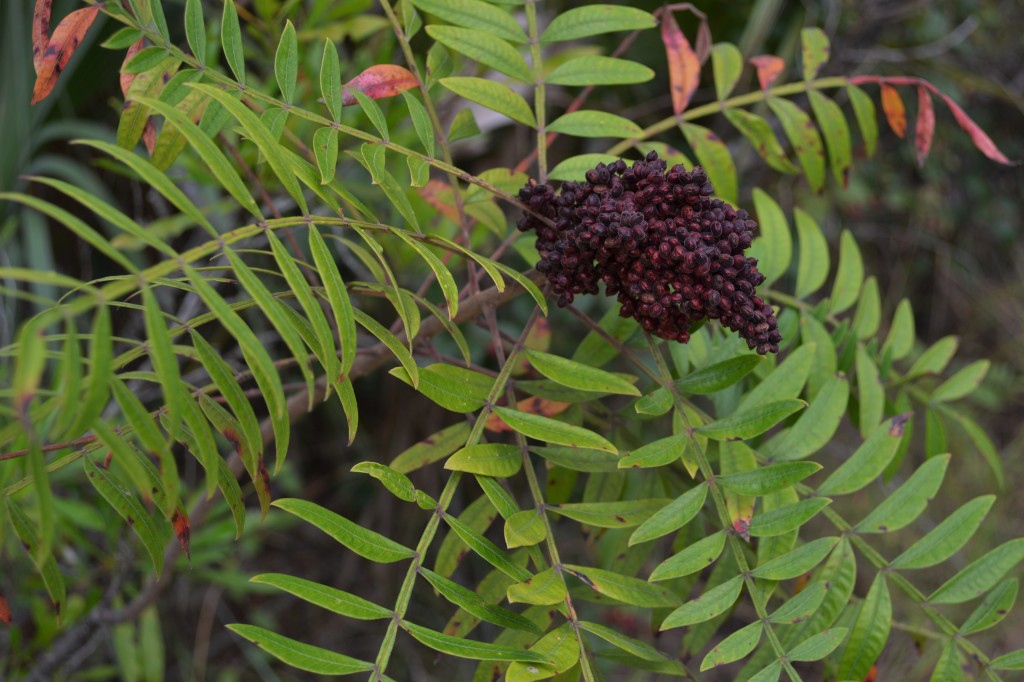Winged Sumac
Rhus copallinum
Plant Family: Anacardiaceae
Leaves: Alternate, once-compound, rachis obviously winged, to 30 cm; there are 11 to 25 leaflets which are usually not toothed.
Bark: Brown-gray, rough, with raised lenticels, the U-shaped leaf scars are large and noticeable.
Flowers: Dioecious, yellow-white, in terminal clusters in late summer.
Fruits: Dark red, hairy, individually to 1 cm, but held in large pyramidal terminal clusters; fall to winter.
Habitat: Common in pinelands and a variety of other drier inland habitats, usually not found on the coast.
Growth Form: Deciduous shrub to small tree that tends to form thickets.
Similar Species: Wingleaf Soapberry (Sapindus saponaria) has an even number of leaflets numbering 6 to 12; Brazilian Pepper (Schinus terebinthifolius) also has fewer leaflets, and smooth fruits.
Comments: Winged Sumac is an important food plant for many birds, which eat the seeds, and for deer and small mammals, which browse the leaves and twigs.

